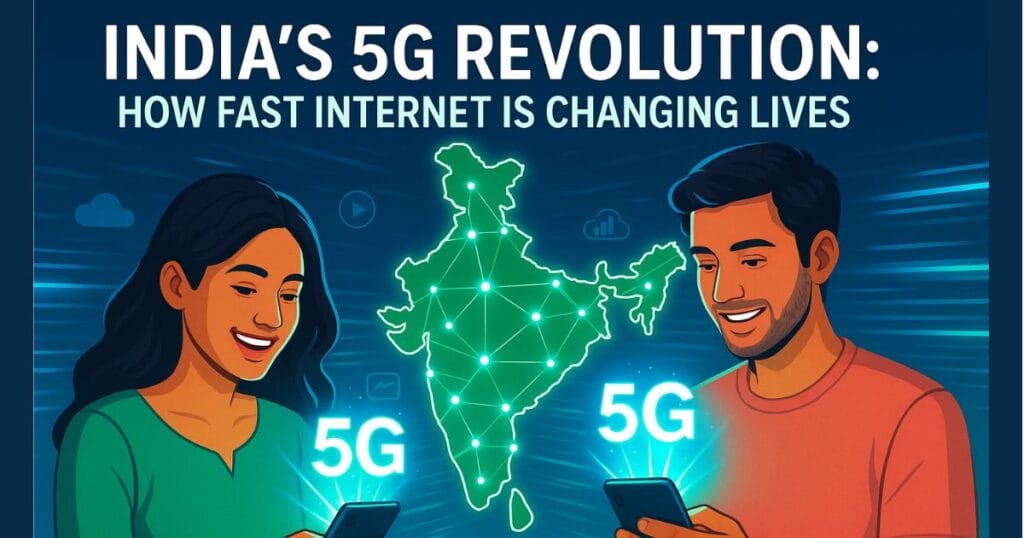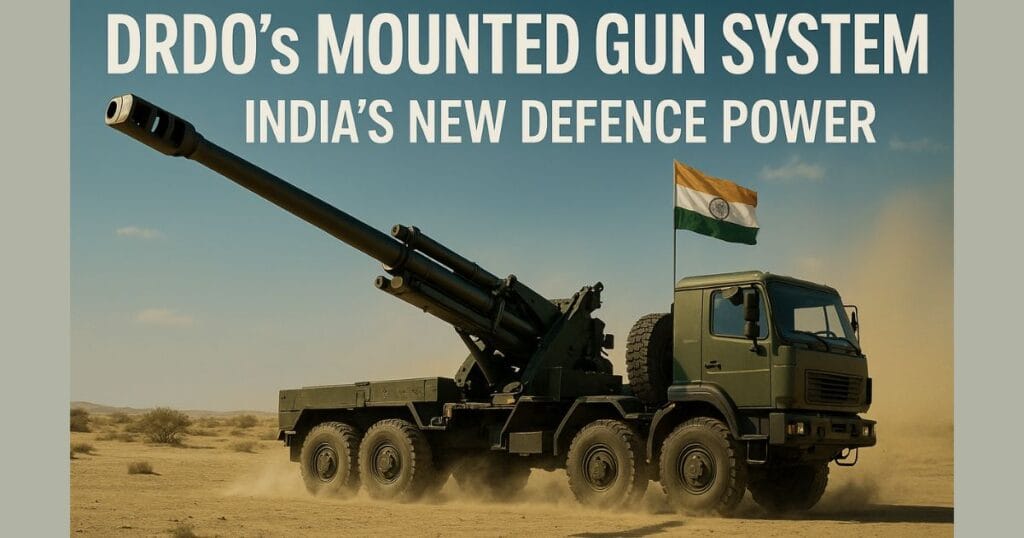In 2022, India’s internet speed ranking was 119, but by 2025, we climbed to the 26th position. From April to June 2025, India’s average download speed reached 136.53 Mbps, marking a significant shift. This means you can now download large files in seconds or stream 4K videos seamlessly. This leap has been made possible due to the 5G network, which has given India a new identity in the digital world.

Why is this significant?
- In 2022, India’s internet speed was slow, causing disruptions in online work.
- A jump of 93 places in 2025 placed India among the top 30 countries in the world.
- This is part of the Digital India Mission, aiming to provide fast internet to every Indian.
The Arrival of 5G: The Reason Behind India’s Internet Revolution
5G, the fifth-generation mobile network, was launched in India in October 2022. Since then, the world of internet in India has seen transformative changes. By March 2025, 57% of telecom towers in India were equipped with 5G, and 326 million people were using 5G, which is 28% of total mobile connections.
What did 5G change?
- High Speed: 5G has multiplied download and upload speeds.
- Low Latency: Online gaming and video calls now face no interruptions.
- Higher Data Usage: People in India now use an average of 32 GB of data per month, the highest in the world.
Example: If you are watching a movie on Netflix, it now streams instantly without buffering because of 5G.
India vs USA vs China: Internet Speed Comparison
In 2025, India’s average download speed was 136.53 Mbps, but the USA and China are still ahead. Let’s take a look
| Country | Ranking (2025) | Average Download Speed (Mbps) |
|---|---|---|
| India (Internet Speed) | 26 | 136.53 |
| USA (Internet Speed) | 13 | 176.75 |
| China (Internet Speed) | 8 | 207.98 |
What do the numbers say?
- The USA and China have higher Internet Speed, but India’s progress has been the fastest.
- Data consumption in India (32 GB per person per month) is higher than in the USA (22 GB) and China (29 GB).
- 5G users in India consume 40 GB per month, which is 1.5 times more than normal mobile users.
How has 5G benefited ordinary people?
5G has not only improved statistics but also made daily life easier. Here are some major benefits:
Seamless Video Streaming and Gaming
- Previously, videos would buffer frequently. Now, with 5G’s high speed, YouTube, Netflix, and online games run without interruption.
- Low latency for Gamers means a fast and smooth gaming experience.
Remote Work and Online Education
- Since the pandemic, remote work and online classes have become common. 5G has made video calls seamless.
- Now, Zoom calls are clear, and online classes do not lag.
Smart Cities and New Technologies
- 5G has accelerated smart city projects, such as smart traffic signals for traffic control.
- It has also supported the Internet of Things (IoT), such as machines that monitor patients remotely.
5G in Rural Areas: What is the Situation?
While 5G is rapidly expanding in cities, more work remains in rural areas. Under the BharatNet project, the government is connecting 600,000 villages with fiber networks, which are the backbone of high-Internet Speed.
Progress in Rural India:
- The number of internet users in villages is rising rapidly.
- People are now using the internet for online shopping, education, and entertainment.
- Although 5G coverage is not as widespread as in cities, the government and telecom companies are working to expand it.
Example: Through the BharatNet project, fiber optic cables are being laid in villages to bring high-Internet Speed to every village.
Challenges on the Road to 5G
There are several obstacles in the path of 5G expansion:
Lack of Infrastructure
- Setting up 5G towers in villages requires time and investment. Lack of roads, electricity, and government clearances makes it difficult.
Expensive 5G Phones
- To use 5G, a 5G-compatible phone is needed, which is still expensive for many.
Spectrum Limitations
- The internet runs on radio waves (spectrum), which are limited, and their allocation often gets delayed.
High Costs
- Telecom companies have to invest heavily in setting up 5G towers, which may increase internet plan prices.
Hopes for the Future: 6G and Wi-Fi 7
India’s digital future is bright. After 5G, discussions have begun around 6G and Wi-Fi 7.
- 6G: It will be faster than 5G, making data transfer smoother.
- Wi-Fi 7: It will make Wi-Fi at home super-fast, allowing multiple devices to work simultaneously.
Digital India Mission
The government’s goal is to provide affordable and fast internet to every Indian. The Smart India Mission will further enhance smart cities and digital services.
Boost to Digital Economy and Startups
5G has given new strength to India’s digital economy:
- Smartphone Users: India has 600 million smartphone users, spending 4.9 hours daily on apps.
- Streaming Boom: The usage of services like Netflix increased 5 times from 2019 to 2024.
- UPI Revolution: With 460 million users and 6.5 million merchants, UPI has made digital payments easy.
Benefits for Startups:
- Fast internet has empowered startups to reach new heights.
- Online shopping, food delivery, and AI-based services have become easier than before.
Conclusion: India’s Digital Future
5G has made India a strong player in the digital world. High-speed internet has not only simplified lives but also boosted startups and the digital economy. Although challenges like connectivity in villages and affordable 5G devices remain, the government and telecom companies are actively working to resolve them. In the future, with 6G and Wi-Fi 7, India could become a digital superpower.
ALSO READ- PM-WANI: Affordable and Fast Internet Now Reaching Every Village 2025
How has 5G improved internet speed in India?
5G has significantly increased download and upload speeds in India, with average download speeds rising from around 14 Mbps in 2022 to 136.53 Mbps in 2025. This means you can now download large files in seconds, stream 4K videos seamlessly, and enjoy smooth video calls and gaming experiences.
Is 5G available in rural areas of India?
Currently, 5G is rapidly expanding in cities, while rural areas are still in progress. Under the BharatNet project, fiber optic networks are being laid in 600,000 villages to enable high-speed internet. However, 5G coverage in villages is not as widespread as in cities yet, but the government and telecom companies are working to improve this.
What are the main challenges in 5G expansion in India?
Key challenges include lack of infrastructure in rural areas, the high cost of 5G-compatible phones, limited spectrum availability, and high investment costs for telecom companies to set up 5G towers. Despite these challenges, India is progressing rapidly in expanding 5G coverage to boost digital connectivity and economic growth.


